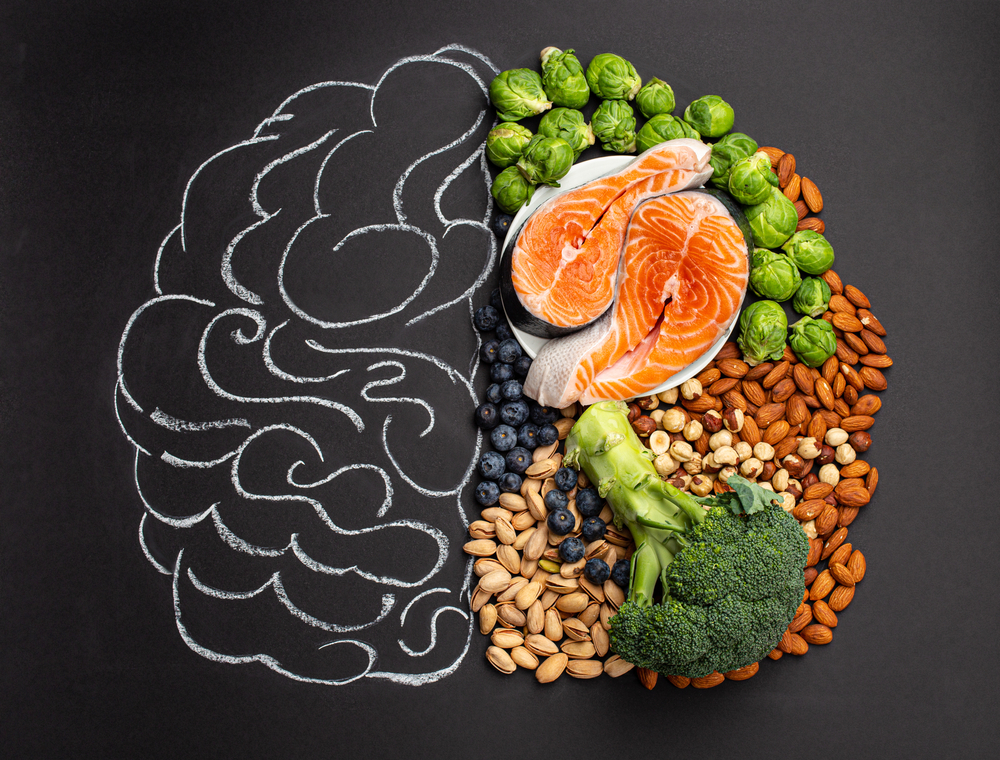Mindful Nutrition: Incorporating Awareness Into Every Bite

Table of Contents
In a fast-paced world where food is often consumed in a hurry, mindful nutrition offers a refreshing approach to eating. By incorporating awareness into every bite, we can embrace a more conscious and satisfying relationship with food. Let’s explore how mindfulness can transform our approach to nutrition and nourish both body and mind.
What is Mindful Nutrition?

Have you ever caught yourself munching snacks while watching TV, only to realize the bag’s empty and you barely tasted a thing? That’s the opposite of what we call mindful nutrition. It’s all about slowing down and really noticing what you’re eating. You pay attention to the flavors, textures, and how the food makes you feel. It’s more than just eating slowly; it’s appreciating your meals and understanding how they fuel your body and mind.
Understanding the concept of mindfulness in nutrition
Imagine you’re sitting down with your favorite meal. Instead of gobbling it down, you take a moment to really look at your food, noticing the colors and the way it’s arranged on your plate. That’s the start of mindful eating—it’s all about fully experiencing the moment and being present as you eat.
When we talk about being mindful in terms of nutrition, it’s not just about eating slowly. It’s a way to connect with our food on a deeper level. By paying close attention to each bite, we can understand how our food choices impact our bodies and our emotions. Mindfulness invites us to listen to our hunger cues and recognize when we’re full, leading to a more balanced and fulfilling relationship with food.
Benefits of Incorporating Awareness Into Every Bite

Taking the time to really notice what you’re eating can do wonders for your health and happiness. It’s not just about choosing veggies over chips; it’s about truly experiencing your food. This practice can help you build a healthier relationship with what’s on your plate, encourage you to savor each flavor and texture, and lead to smarter, more mindful meal decisions. Let’s dive into some key perks of this approach, from enhancing your enjoyment of meals to making a positive impact on your overall well-being.
Developing a Healthier Relationship with Food
When we think about eating, it’s often about the pleasure of taste or simply fueling up to get through our day. But there’s so much more to it. Mindfulness offers a way to form a deeper connection with the meals we consume. By paying attention to each forkful, we start to notice our habits around food and how they affect us, leading to better choices and a more satisfying eating experience.
Embracing this attentive approach helps us recognize when we’re truly hungry and when we might be reaching for that cookie out of boredom or stress. We learn to savor our meals, eating slowly and with intention. This not only aids in digestion but also teaches us to be grateful for the nourishment we have, improving our overall well-being and relationship with the food on our plates.
Enhanced appreciation for flavor and texture
Imagine taking a bite of your favorite dish, but this time, you’re paying full attention to its taste and texture. That’s what being conscious about what you eat can do for you. Every flavor, whether sweet, salty, sour, or bitter, becomes pronounced and every texture, from the crunch of a crisp apple to the smoothness of creamy yogurt, turns into a truly sensory experience.
By being fully present during your meals, you start to notice the subtle differences in quality and ingredients. You might find that foods with fewer additives and less processing not only taste better but also feel better in your mouth and in your stomach. Taking the time to chew thoroughly not only aids digestion but also lets you fully enjoy the richness embedded in each mouthful, fostering a newfound appreciation for foods you’ve known all your life.
Practical Strategies for Mindful Eating

Eating isn’t just about filling up the tank; it’s an experience that can be full of joy and presence when we approach it the right way. Mindful eating is about engaging with our food on a deeper level, tuning into the taste, the smell, and the textures with every mouthful. It helps us appreciate the moment and the nourishment our food provides, leading to healthier choices and a greater sense of satisfaction. Let’s look at how we can make eating a more intentional and enriching part of our daily lives.
Engaging All the Senses During Meals
When we sit down to eat, it’s more than just a taste experience; it’s a full sensory symphony! To eat mindfully means to wake up to the whole show. Imagine every meal as a multisensory performance, from the vibrant colors on your plate to the soothing or energizing music in the background.
Start by admiring your food with your eyes – notice the bright red of ripe tomatoes or the deep green of spinach leaves. Then, take a moment to breathe in the aromas before you even take a bite. The scent of herbs and spices can tell the story of the meal you’re about to enjoy. As you chew, listen to the crunch or soft sounds each bite makes. Feel the textures on your tongue – the smoothness of yogurt or the roughness of grains. Each sense adds a layer of enjoyment and keeps you fully in the moment.
Creating Nourishing and Balanced Meals
Crafting meals that are both nourishing and balanced is more than just mixing your veggies with proteins. It’s about creating harmony on your plate and in your body. Think of your meal as a canvas where each ingredient brings its own burst of nutrients, flavors, and textures. The key is to include a variety of food groups, making sure you get the right mix of carbohydrates, fats, and proteins.
When you’re in the kitchen, imagine balancing your plate like a seesaw. On one side, you have whole grains like brown rice or quinoa, and on the other, lean proteins such as chicken or beans. Don’t forget to pile on the vegetables and fruits for essential vitamins and fiber, drizzling everything with healthy fats like olive oil or avocado slices. Be creative with herbs and spices to enhance flavors without adding extra salt or sugar. It’s not just about feeding your stomach, but nourishing your soul with every color and scent.
Mindful Eating in Everyday Life

Eating isn’t just about filling up; it’s an experience we can truly savor. Whether we’re at a bustling dinner party or grabbing lunch on the go, bringing mindfulness into our every meal can enrich the way we eat and live. Let’s dive into how we can practice this during our daily routines to transform our relationship with food.
Mindful Eating at Social Gatherings and Restaurants
When we’re out with friends or dining at a cool new restaurant, it’s easy to get swept up in the fun and forget about eating with intention. Social settings, especially ones with yummy food around, can really test our ability to stay present with our eating habits. However, that doesn’t mean we can’t have a blast while being aware of the flavors and textures filling our plates.
It’s all about balance! Here’s a quick tip: try to get a sense of the space before diving into the meal. Take a moment to appreciate the setting, the company, and the effort that went into the food. Engaging in conversation between bites is not just polite, it actually gives your brain time to register what you’re eating. This little pause helps prevent overindulging and makes for a more memorable and satisfying dining experience.
Cultivating mindful snacking habits
The secret to snacking the right way isn’t just in what we eat, but also in how we eat it. Paying attention during snack time means we’re not just eating because we’re bored or because the clock says it’s snack time. Instead, we choose to indulge in snacks that are not only tasty but also nourishing.
Being present while snacking allows us to really enjoy the flavors and textures. We can do this by taking smaller bites and really savoring each piece. Also, limiting distractions like TV or smartphones can help us focus on our hunger cues and satisfaction, preventing overeating. This habit makes each snacking experience fulfilling and even a bit joyful, making our food choices smarter and our bodies happier.
Enhancing Mindful Nutrition with Mindful Cooking

Cooking isn’t just about mixing ingredients; it’s an art and a meditation when approached with intentionality. By engaging in mindful cooking, you step into a space where each chop, stir, and simmer is an opportunity to connect with the present moment, bringing a new depth to the act of preparing your meals. Let’s turn the routine kitchen hustle into a symphony of awareness that enriches our connection with the food we nourish ourselves with.
Bringing Mindfulness into the Kitchen and Meal Preparation
Cooking isn’t just about putting food on the plate; it’s an art form and a moment for presence. When you step into the kitchen, consider it a sanctuary where every chop, stir, and taste is an opportunity for mindfulness. Imagine the vibrant colors of vegetables, the aroma of fresh herbs, and the warmth of the stove as not just part of the cooking process, but as a dance that engrosses all your senses.
To truly infuse mindfulness into meal prep, start by silencing your phone and eliminating distractions. Play some soft music or embrace the gentle hum of the kitchen appliances. Focus on the ingredients before you. Feel the texture of the rice, smell the zest of a lemon, and take pleasure in the sizzle of a pan. This deliberate attention not only brings joy but also connects you deeper with the nourishing qualities of the food you’re about to enjoy.
Conclusion
Incorporating awareness into every bite is a simple yet profound practice that can lead to a more fulfilling and nourishing relationship with food. By embracing the principles of mindful nutrition, we invite a sense of mindfulness and gratitude into our daily eating experiences, ultimately promoting overall well-being and balance in our lives.
- Mindful Eating – The Center for Mindful Eating:
- Website: The Center for Mindful Eating
- The Center for Mindful Eating offers resources, articles, and courses on mindful eating, providing insights into incorporating mindfulness into your relationship with food.
- Mindful Eating – Harvard Health Publishing:
- Website: Harvard Health Publishing – Mindful Eating
- Harvard Health Publishing often provides evidence-based articles on various health topics, including mindful eating.
- Mindful Nutrition – Mayo Clinic:
- Website: Mayo Clinic – Mindful Eating: Get More Out of Your Meals
- Mayo Clinic is a reputable source for health information. Their article on mindful eating provides practical tips and advice.








Can you be more specific about the content of your article? After reading it, I still have some doubts. Hope you can help me.
Thanks for sharing. I read many of your blog posts, cool, your blog is very good.